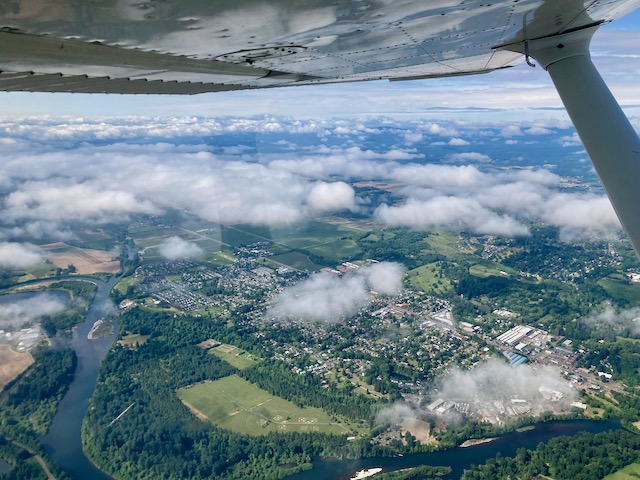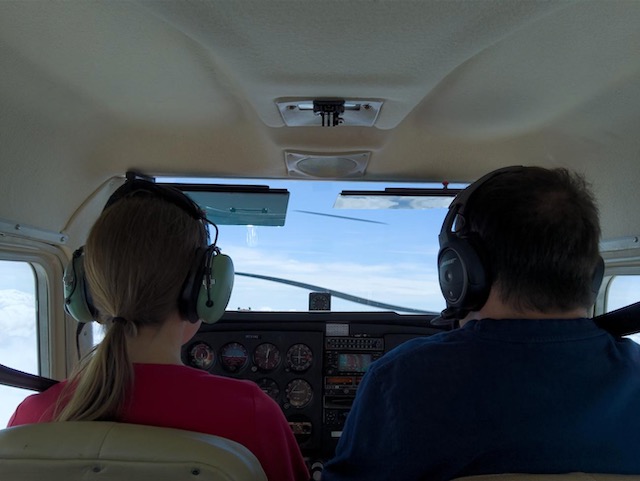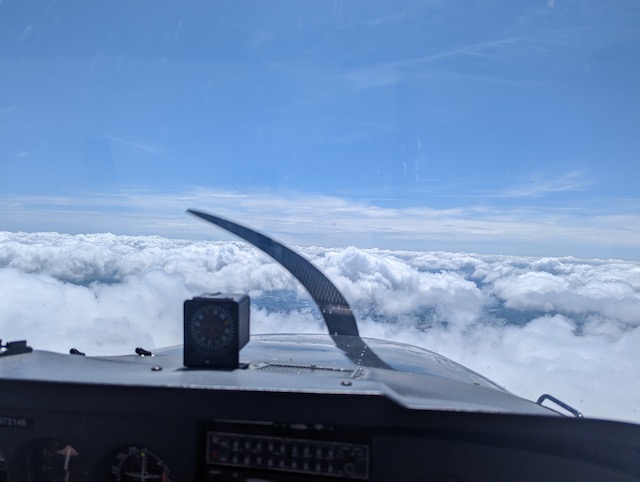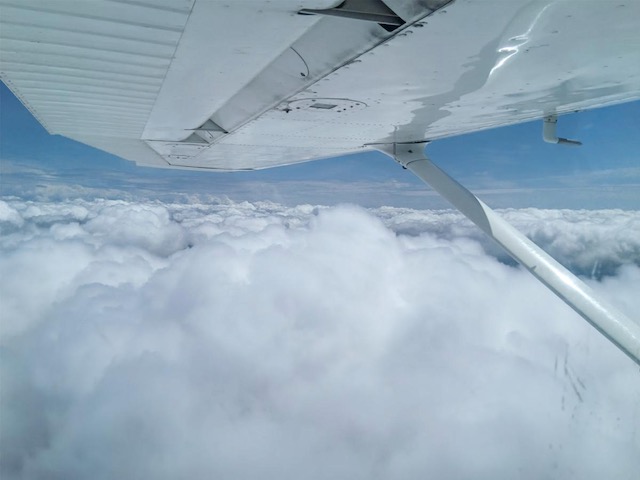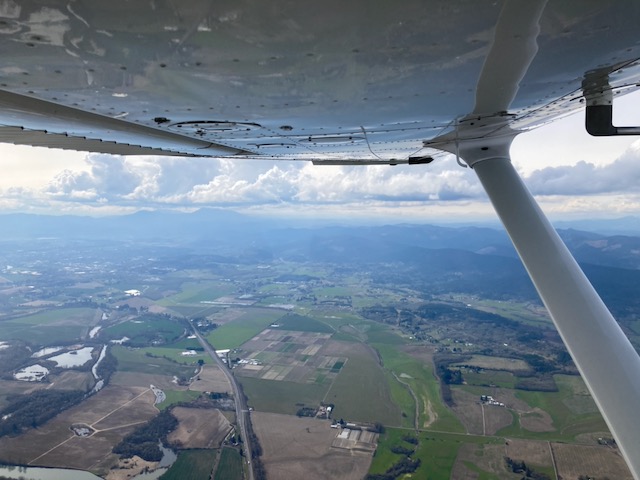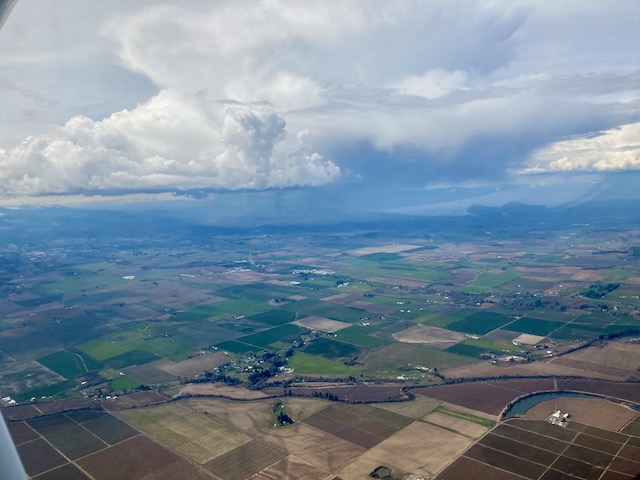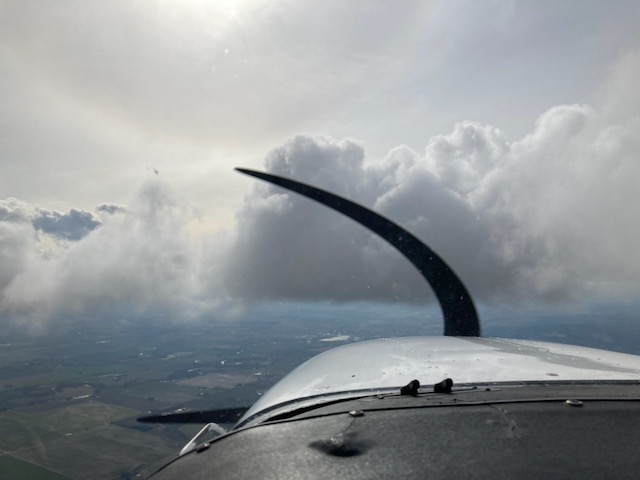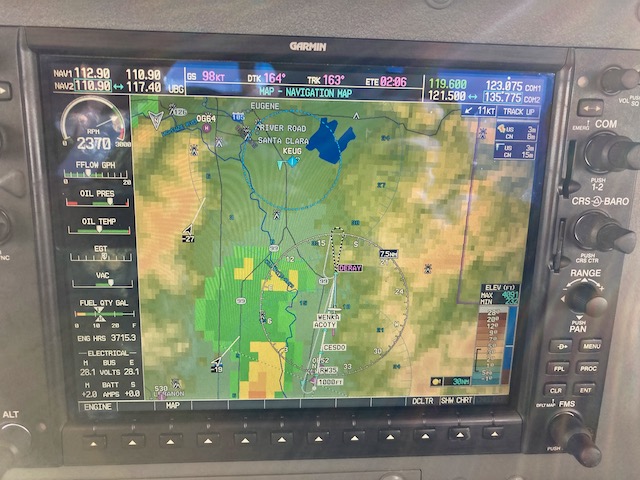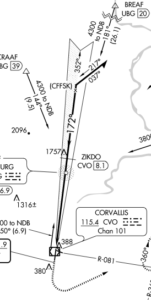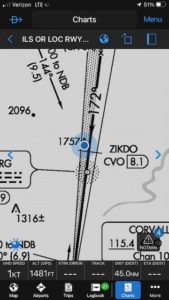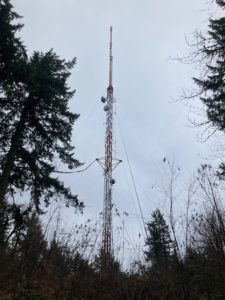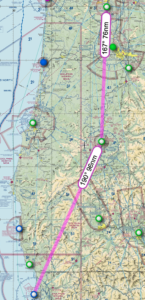Flying IFR to Aurora
June 8th, 2023 at 2:07 pm (Flying)
On May 27, I flew with friends up to the Aurora State Airport (KUAO) for a safety seminar. It’s about a 30-minute flight each way. I’ve never actually visited the town of Aurora on the ground, but I’ve flown to the airport many times. Willamette Aviation does a wonderful job of bringing in great speakers and also serving treats like ice cream and pie – and for this event, a full BBQ!
By default, we planned to fly there VFR (visually). But when we gathered at the airport, the cloud ceiling was only 1500′ above the surface. No worries, perfect chance to exercise that instrument rating! We had five people going in two planes, with one instrument-rated pilot per plane. I filed KCVO DUBMY KUAO to set myself up for the RNAV 35 approach to KUAO, but ATC came back with KCVO CVO V495 UBG KUAO at 6000′, a longer route that would take us north before coming back south to make a northward landing. I hoped they might give us a shortcut along the way.
I was flying the slower of our two planes, so the faster one departed first and then we “held for release” until they were clear of the airspace and Cascade Departure cleared us to take off. The clouds were now at 1900′ above the ground. We climbed up via the SHEDD4 departure, punched through the clouds (which were only a few hundred feet thick) and then were on our way north. The clouds below us got thinner and I had this beautiful view:
Our lead plane was vectored off of V495 with the hoped-for shortcut to the RNAV 35 approach to KUAO. We were left tracking V495 much longer, but our vector finally came and we got to head over to execute the same approach. After joining the final approach course, we punched down through a thicker cloud layer, then executed a nice landing.
The seminar was about “continuation bias” and how it can lead to many bad outcomes, including CFIT (controlled flight into terrain). Here’s a nice summary of the high points along with great tips.
Afterwards we enjoyed the BBQ and then prepared for the return flight, which was also IFR. We had a lot of sunshine, and the clouds were higher (around 3500′), but we still got to plunge into and out of them. There is really nothing like that feeling – it is a thrill every single time!
One of the great things about flying this day were my companions! I had a great co-pilot who is working on his instrument rating and handled our ATC communications for practice (with me monitoring of course, since I’m responsible for the flight in this setting). I really enjoy flying as a team! We also had a passenger in the back taking his very first flight in a small plane. He took a lot of pictures and seemed to enjoy the thrill of ducking in and out of clouds too!
Looking forward as we returned southbound, above the clouds at 5000′:
Looking out to the side:
We returned to KCVO via the ILS 17 approach from SKIVE (a new waypoint for which apparently some folks say “skive” and others say “skeevy”). Once down through the clouds, we canceled IFR and crossed over midfield to land on runway 28.
One of the challenges of this flight was that with three people in the plane, it was near max gross weight. I did extra-careful fuel calculations and we were able to go with half-full tanks, but even so the plane’s performance in terms of climb rate and cruise speed was definitely lower than usual. However, it was a great flight, and I just love getting to sail through the clouds and maintain proficiency with instrument flight. Looking forward to next time already!
